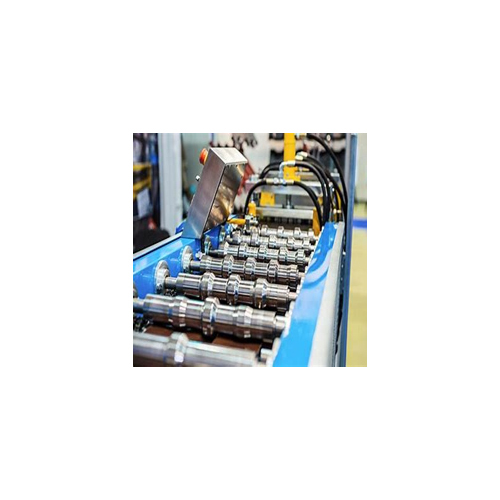Continuous Heat Treatment Furnace
Continuous Heat Treatment Furnace Specification
- Condition
- New
- Type
- Continuous Heat Treatment Furnace
- Size
- Standard
- Usage
- Melting Furnace
- Voltage
- 220-240 Volt (v)
- Color
- Silver
- Warranty
- 1 Year
Continuous Heat Treatment Furnace Trade Information
- Minimum Order Quantity
- 10 Pieces
- Supply Ability
- 1000 Pieces Per Month
- Delivery Time
- 7 Days
About Continuous Heat Treatment Furnace
Definition
A Continuous Heat Treatment Furnace is an industrial system designed for the thermal processing of materials in a continuous flow This type of furnace is ideal for largescale production where consistent heating controlled atmospheres and efficient throughput are required
Key Features
Continuous Operation
Materials move through the furnace on conveyors rollers or belts ensuring steady uninterrupted production
Ideal for highvolume manufacturing
Zoned Temperature Control
Divided into multiple heating and cooling zones for precise temperature profiles
Zones include preheating heating soaking and controlled cooling areas
Atmosphere Control
Equipped with systems to create specific environments eg inert gases vacuum or controlled air to prevent oxidation or achieve desired material properties
Flexible Configurations
Horizontal or vertical designs depending on space and process requirements
Modular systems allow scalability and customization
High Automation
Integrated control systems ensure accurate process parameters and reduce human intervention
Applications
Automotive
Heat treatment of gears shafts and engine components to improve strength wear resistance and fatigue life
Aerospace
Processing of structural components turbine blades and fasteners for high temperature and mechanical stress resistance
Steel Industry
Continuous annealing hardening and tempering of sheets strips and wires
Electronics
Annealing and tempering of conductive materials like copper and aluminum for improved electrical properties
Tool Manufacturing
Heat treatment of cutting tools saw blades and dies for enhanced durability and performance
Types of Continuous Furnace
AHT Make Pusher Type Furnaces
Components are pushed through the furnace on trays
Often used for heavy duty applications like forging and casting
Advantages
High Throughput : Continuous design ensures maximum productivity making it suitable for mass production
Uniform Heating : Precise temperature control and zoned heating provide consistent and repeatable results
Energy Efficiency : Heat recovery systems reduce energy consumption by utilizing exhaust heat
Reduced Handling : Automated material movement minimizes human intervention and handling errors
Scalability : Modular designs allow for future expansion to meet growing production demands
Customizable Atmospheres : Enables specific treatments such as carburizing annealing or nitriding in controlled conditions
Common Materials Treated
Carbon and Alloy Steels Stainless Steels Copper and Aluminum Alloys NickelBased Superalloys Titanium Alloys
Key Technical Parameters
Operating Temperatures : Typically ranges from 500C to 1300C depending on the material and treatment process
Conveyor Speed : Adjustable to control residence time for specific treatments
Atmosphere Options : Vacuum inert gases eg nitrogen argon or reactive gases eg hydrogen for annealing
Capacity : Can handle 500 Kg material per hour size 450x400 x1200 mm
Control Systems : Equipped with advanced sensors and PLCs for precise temperature atmosphere and speed control
Industries and Use Cases
Automotive Industry : Continuous hardening and tempering of transmission components Case hardening of gears via carburizing furnaces
Steel and Metal Industry : Continuous annealing of steel strips in a controlled atmosphere to improve ductility and surface finish
Tool Manufacturing : Heat treatment of cutting tools and dies for improved hardness and wear resistance
Electronics : Processing of conductive materials like copper wires for high conductivity and mechanical strength
A Continuous Heat Treatment Furnace is an industrial system designed for the thermal processing of materials in a continuous flow This type of furnace is ideal for largescale production where consistent heating controlled atmospheres and efficient throughput are required
Key Features
Continuous Operation
Materials move through the furnace on conveyors rollers or belts ensuring steady uninterrupted production
Ideal for highvolume manufacturing
Zoned Temperature Control
Divided into multiple heating and cooling zones for precise temperature profiles
Zones include preheating heating soaking and controlled cooling areas
Atmosphere Control
Equipped with systems to create specific environments eg inert gases vacuum or controlled air to prevent oxidation or achieve desired material properties
Flexible Configurations
Horizontal or vertical designs depending on space and process requirements
Modular systems allow scalability and customization
High Automation
Integrated control systems ensure accurate process parameters and reduce human intervention
Applications
Automotive
Heat treatment of gears shafts and engine components to improve strength wear resistance and fatigue life
Aerospace
Processing of structural components turbine blades and fasteners for high temperature and mechanical stress resistance
Steel Industry
Continuous annealing hardening and tempering of sheets strips and wires
Electronics
Annealing and tempering of conductive materials like copper and aluminum for improved electrical properties
Tool Manufacturing
Heat treatment of cutting tools saw blades and dies for enhanced durability and performance
Types of Continuous Furnace
AHT Make Pusher Type Furnaces
Components are pushed through the furnace on trays
Often used for heavy duty applications like forging and casting
Advantages
High Throughput : Continuous design ensures maximum productivity making it suitable for mass production
Uniform Heating : Precise temperature control and zoned heating provide consistent and repeatable results
Energy Efficiency : Heat recovery systems reduce energy consumption by utilizing exhaust heat
Reduced Handling : Automated material movement minimizes human intervention and handling errors
Scalability : Modular designs allow for future expansion to meet growing production demands
Customizable Atmospheres : Enables specific treatments such as carburizing annealing or nitriding in controlled conditions
Common Materials Treated
Carbon and Alloy Steels Stainless Steels Copper and Aluminum Alloys NickelBased Superalloys Titanium Alloys
Key Technical Parameters
Operating Temperatures : Typically ranges from 500C to 1300C depending on the material and treatment process
Conveyor Speed : Adjustable to control residence time for specific treatments
Atmosphere Options : Vacuum inert gases eg nitrogen argon or reactive gases eg hydrogen for annealing
Capacity : Can handle 500 Kg material per hour size 450x400 x1200 mm
Control Systems : Equipped with advanced sensors and PLCs for precise temperature atmosphere and speed control
Industries and Use Cases
Automotive Industry : Continuous hardening and tempering of transmission components Case hardening of gears via carburizing furnaces
Steel and Metal Industry : Continuous annealing of steel strips in a controlled atmosphere to improve ductility and surface finish
Tool Manufacturing : Heat treatment of cutting tools and dies for improved hardness and wear resistance
Electronics : Processing of conductive materials like copper wires for high conductivity and mechanical strength

- Minimum Order Quantity
- 10 Pieces
- Supply Ability
- 1000 Pieces Per Month
- Delivery Time
- 7 Days
Tell us about your requirement

Price:
Quantity
Select Unit
- 50
- 100
- 200
- 250
- 500
- 1000+
Additional detail
Mobile number
Email



